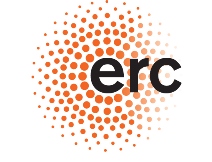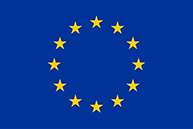About the project
 Large-scale immigration has introduced salient new dimensions of ethnic stratification in Europe’s rich, liberal democracies— successful incorporation of disadvantaged, newcomer immigrant minorities now poses a critical challenge for the 21st century. Despite a vast literature on labor market inequalities between immigrants and natives, the great majority of these studies use data only on individual workers and yield limited knowledge about the role of firms and workplace contexts. Yet, there has still been no systematical attempt to exploit linked employer-employee data to assess how work organizations are linked to economic assimilation across immigrant generations. ORGMIGRANT will bring a new organizational focus on workplaces as key sites where contemporary dynamics of ethnic stratification unfold at the micro level.
Large-scale immigration has introduced salient new dimensions of ethnic stratification in Europe’s rich, liberal democracies— successful incorporation of disadvantaged, newcomer immigrant minorities now poses a critical challenge for the 21st century. Despite a vast literature on labor market inequalities between immigrants and natives, the great majority of these studies use data only on individual workers and yield limited knowledge about the role of firms and workplace contexts. Yet, there has still been no systematical attempt to exploit linked employer-employee data to assess how work organizations are linked to economic assimilation across immigrant generations. ORGMIGRANT will bring a new organizational focus on workplaces as key sites where contemporary dynamics of ethnic stratification unfold at the micro level.
The objective of ORGMIGRANT is to demonstrate how work organizations both contribute to and reflect changing patterns of ethnic stratification across immigrant generations. The project will study workplace segregation and probe whether, how, and why ethnic boundary salience and immigrant-native inequalities vary by organizational context. To this end, we will use economy-wide linked employer-employee data from Norway and comparisons with several high-income countries. Our high-quality data allow us to situate workers inside workplaces, enabling the study of the organizational context of immigrant-native labor market inequalities in high detail using state-of-the art panel data techniques.
ORGMIGRANT will be organized into three work packages: (1) organizational sources behind native-immigrant workplace segregation; (2) organizational determinants of immigrant-native inequalities within workplaces; (3) a cross-national comparison of organizational variation in workplace-specific immigrant-native pay inequalities and the size of within-job pay gaps (i.e. same occupation and workplace).
Objectives
Primary objective
- To demonstrate how work organizations both contribute to and reflect changing patterns of ethnic stratification across immigrant generations
Secondary objectives
- To integrate organizational theories with empirical research on immigrant economic assimilation
- To provide methodological development in research on immigrant economic assimilation by adopting analytical approaches developed for linked employer-employee data
- To generate policy-relevant knowledge on organizational sources of immigrant economic assimilation
Full project title
How work organizations shape ethnic stratification across immigrant generations: assimilation, segregation, and workplace contexts (ORGMIGRANT)
Principal investigator of ORGMIGRANT
Dr. Are Skeie Hermansen, University of Oslo
Advisory board
- Prof. Donald Tomaskovic-Devey, University of Massachusetts, Amherst
- Prof. Irena Kogan, University of Mannheim
- Prof. Trond Petersen, University of California, Berkeley
- Prof. Andrew Penner, University of California, Irvine
- Prof. Jan O. Jonsson, University of Oxford and Stockholm University
Cooperation
ORGMIGRANT will collaborate with members of the Comparative Organizational Inequality Network (COIN), which is a network of social scientists from about 15 countries working on cross-national comparative and organizational approaches to the study of labor market inequalities using linked employer-employee data.
Funding
This project has received funding from the European Research Council (ERC) under the European Union’s Horizon 2020 research and innovation programme (grant agreement no. 851149, ERC Starting Grant 2019).
Project period
1 September 2020 - 31 August 2025
